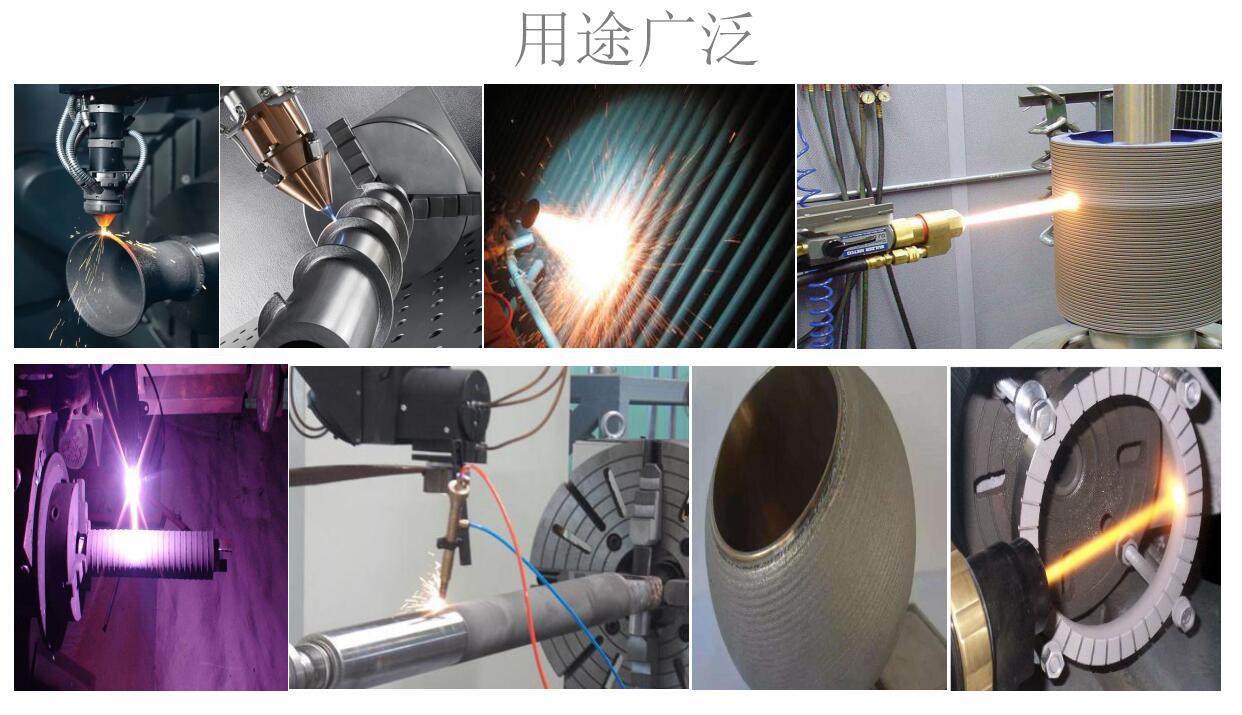

current position:Information and data>[2]General classification of thermal spraying powder
Ceramics, cermets and their composite powders
Ceramic materials refer to metal oxides, carbides, nitrides, borides, and silicides. Ceramic materials have stable chemical properties and high melting points.
Commonly used oxide ceramics are: alumina (Al2O3), zirconia (ZrO2), chromium oxide (Cr2O3), titanium oxide (TiO2), etc., and their composites.
The alumina used for spraying is generally a stable alpha phase, the coating is resistant to high temperatures, has good electrical insulation properties, high hardness, and low friction coefficient. It can be used with wear-resistant coatings, electrical insulation coatings and thermal insulation coatings.
Titanium oxide has several phase structures, and small changes in composition (loss of oxygen) will cause greater changes in appearance, color and performance. The titanium oxide coating is hard and dense. A certain amount of titanium oxide (content ranging from 3% to 50%) is added to alumina to improve the toughness and compactness of the coating. This material is also called aluminum oxide titanium, and its coating has excellent fiber wear resistance.
The chromium oxide coating has excellent resistance to hard surface wear and abrasive wear at 550°C. Another advantage of the chromium oxide coating is that it has good self-matching performance, which can be well matched with the counter grinding pair during sliding friction.
Zirconia has a high melting point and low thermal conductivity. It is an excellent high temperature insulation material. ZrO2 will undergo phase change and volume change at a certain temperature. When used as a thermal barrier coating, the material should be stabilized (commonly used Y2O3), Y2O3+ZrO2 is an ideal thermal barrier coating material and has been widely used.
Commonly used carbide ceramics are: tungsten carbide (WC), chromium carbide (Cr3C2), molybdenum carbide and so on.
Tungsten carbide is a hard material, which is prone to phase change at high temperatures, which greatly reduces the hardness. Because metal cobalt has good high temperature performance, and the cobalt melt has excellent wetting ability for WC, therefore, cobalt-tungsten carbide becomes the most ideal spraying tungsten carbide material. Chromium carbide has good resistance to high temperature oxidation and high temperature wear resistance. It is often mixed with nickel-chromium alloy to improve the cohesive strength of the coating. In order to improve the wettability of chromium carbide, it can be coated or compounded with nickel or cobalt first, and then mixed with Ni-Cr.
Ceramic composite powder and metal ceramic composite powder
Ceramic composite powder. Two or more ceramic materials are combined in a certain proportion to obtain better thermal spraying ceramic materials. The composite method can be agglomeration and sintering, or melting and crushing. Aluminum oxide-titanium oxide series; zirconium oxide-yttrium oxide, zirconium oxide-magnesium oxide, zirconium oxide-calcium oxide materials; and chromium oxide-silicon oxide-titanium oxide materials.
Metal ceramic composite powder. This material has the toughness of metal materials and the high hardness and chemical stability of ceramic materials. Their compounding methods include: mixing, agglomeration, agglomeration and sintering. Tungsten carbide-cobalt series and chromium carbide-nickel-chromium series are the two most widely used cermet materials. In recent years, brand-new cermet materials have been introduced. They have better strength, higher deposition efficiency, denser coating and more wear-resistant: WC-10Ni, WC-Co-Cr, WC-CrC- made by agglomeration and sintering methods. Ni and other powders.

Hot information

